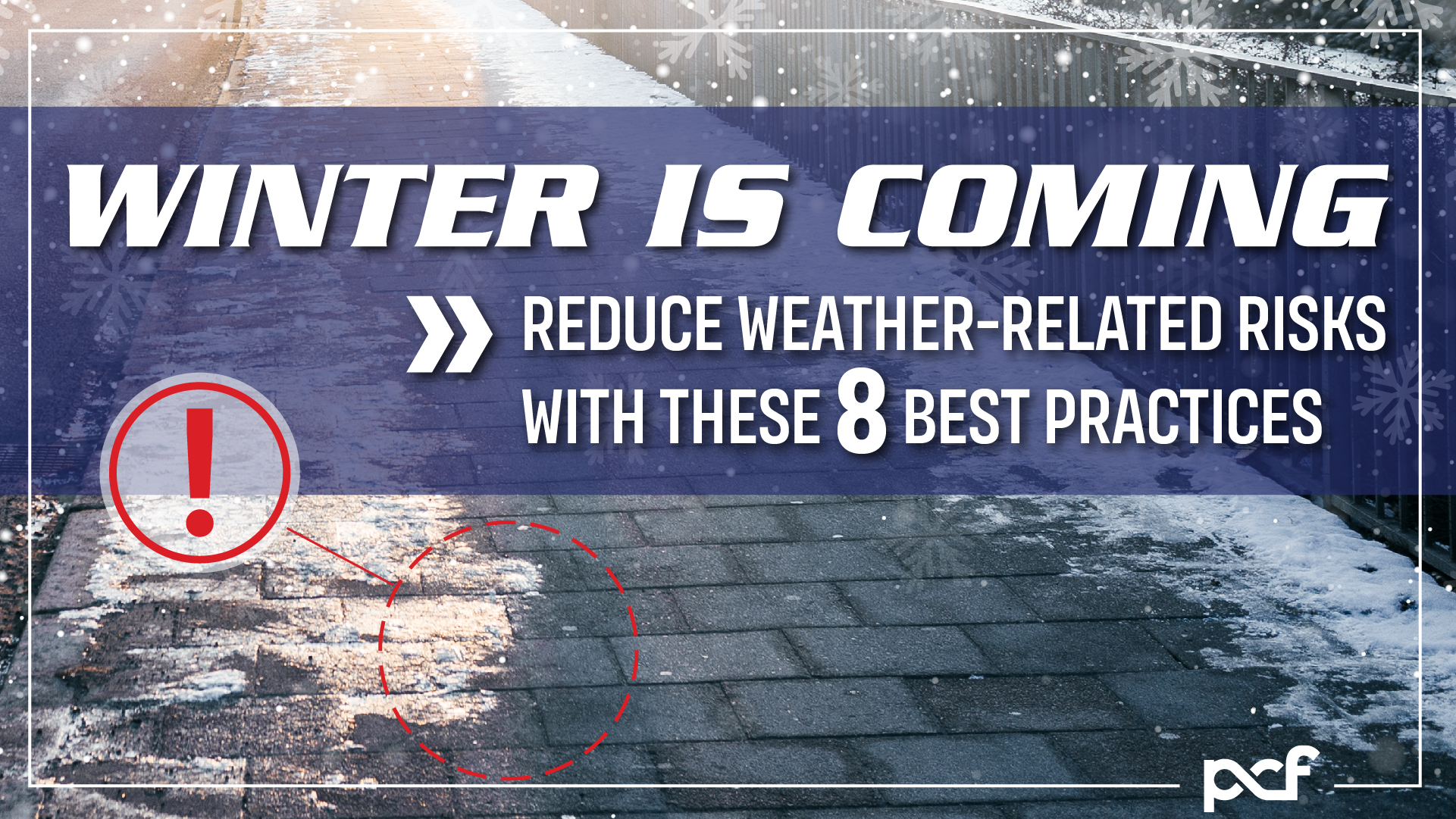Winter Is Coming: Reduce Weather-Related Risks with These 8 Best Practices

As more employees return to the office this winter, don’t overlook the potential hazards on your business’ premises that lead to all-too-common slips, trips, and falls and other workplace hazards.
By Dan Fegel, CSP, CSHM and Brad Schreck, Risk Management, PCF Insurance
It’s only a matter of time before winter hazards strike. Each year thousands of workers are injured or disabled as a result of slips, trips, and falls, which may occur anytime, anywhere, or to anyone. By proactively managing your business/workplace environment you can help lower the risk of injury to your employees and customers as business resumes from COVID-19 disruptions.
Businesses are liable for damages that arise from unintentional injuries or accidents that occur on their grounds when negligence is found, and corrective action is not taken. As weather-related risks head our way it’s time for managers to ready their premises, review safety policies and procedures, and update incident response plans.
Identifying Hazards in Your Workplace
In addition to complying with all state and local health, building, and safety codes, here are eight best practices to help reduce the risks associated with seasonal changes and promote a culture of safety among employees.
- Inspect your premises. Check the premises daily, more frequently if the weather is bad and document all steps taken, as fixing or repairing these types of issues proves you took precautions to mitigate incidents. Examine sidewalks and parking lots for anything that might lead to slips, trips or falls. Look out for and trim overgrown shrubbery that might get in the way of recreational cold weather walkers or snow removal vehicles.
- Light the way. Poor lighting in the workplace is associated with an increase in accidents. Maintain proper illumination in walkways, staircases, ramps, and hallways. Make sure outdoor lights are working and programmed properly to ensure they turn on when it gets dark.
- Prepare for ice. Rain, snow, and ice create outdoor and entry slip hazards when not cleaned up promptly. Ice-melting products and non-slip runners can greatly reduce hazards during winter months. In dangerous areas, have a bucket of ice melt available nearby and add warning signs, in addition to having facilities personnel service these areas more often.
- Maintain your grounds. Maintain exterior steps, ramps, walkways, entry, and exit areas. Use moisture-absorbent mats with beveled edges in entrance areas with non-slip backing material to prevent sliding. Clean up spills immediately and make sure mats are cleaned regularly. Display “Wet Floor” or other signage as needed.
- Update insurance. Review all relevant insurance policies to understand your coverage for property damage, liability, and loss of rental income and business interruption. Ensure your policies have appropriate coverage limits to adequately protect you from potential damage.
- Check vendor COIs. If you have a property management company doing your landscaping, turning off your sprinkling system, or handling snow removal, make sure you have the right risk transfer wording in your contract. Ask your vendors for a certificate of insurance (COI) and request their coverage limits. As a property owner, ask to be listed as an additional insured. Secure and review copies of vendor coverage agreements.
- Prepare for cold weather calamities. Prepare for freezing pipes, interior water losses from heavy rainfall, and clogged storm and roof drains by doing preventative maintenance now. Check heating systems and make sure smoke detectors and CO2 monitors are working well.
- Check the fleet. Have your company vehicles serviced and ensure they have the right tires for the elements. Tires lose pressure as temperatures decrease. Vehicles should be equipped with emergency roadside kits that include jumper cables, spare tires, and other emergency items.
Don’t Slip Up After a Fall Occurs
Be proactive and establish an incident response plan to mitigate your exposure. The plan should specify who will collect the data, take pictures, view video surveillance and report incidents to upper management in the event of a safety incident. Documentation to show your organization has taken preventative steps to mitigate a loss is your best defense against third-party claims.
Contact PCF’s risk management team for more information on best practices for weatherizing your operations.
